By Sean Fagan
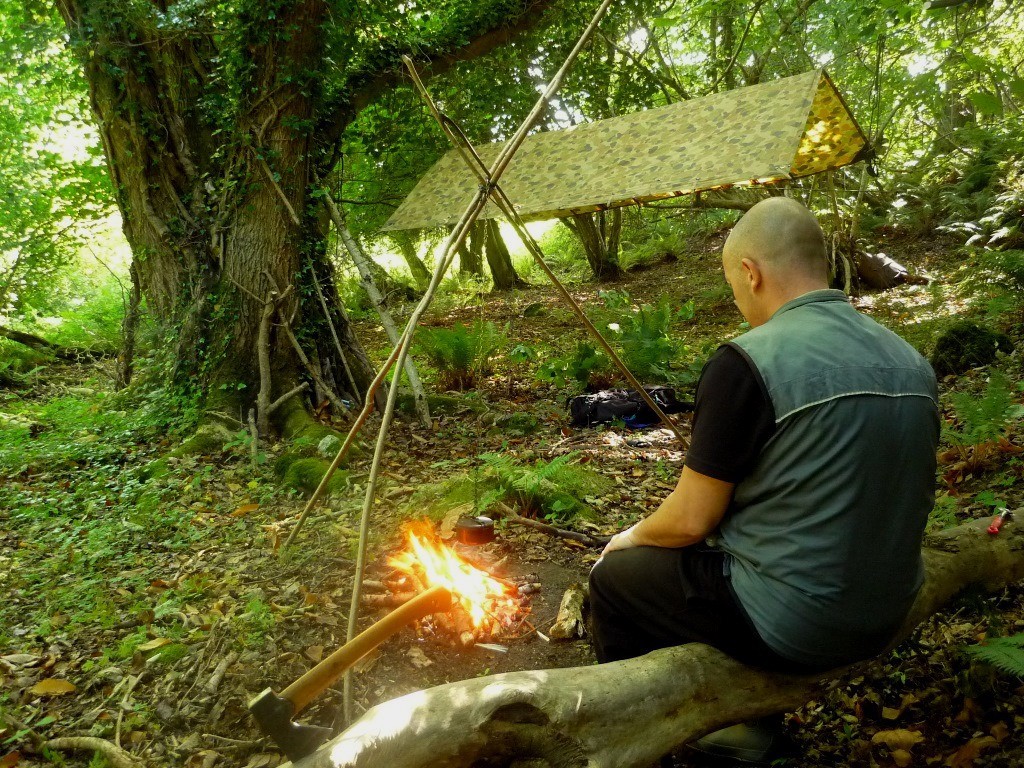
Boiling a pot of water for some wild tea. In this case, a cup of Opposite-leaved, Golden saxifrage (Chrysosplenium oppositifolium) - my vote for the best named wild plant in Ireland. Wild teas, like most teas, are mostly made from thin, leaf material and occasionally flowers (Photo: Sean Fagan).
.
Making Tea in the Outdoors
.
Sometimes, there can be a fine line between efficiency and laziness.
When it comes to making tea outdoors from wild plants I could be accused of being lazy.
I don't use a strainer. I don't usually use a knife or scissors to cut up leaves for making tea.
Instead, I shred up the leaf material with my hands.
I don't even bother removing the shredded leaves after it has steeped in my cup. I simply drink the tea with the leafy bits near the bottom of the cup.
But don't let this simple routine fool you - my teas are refreshing, restorative and brimming with the often unique flavours of wild plants.
They are also nutritious - as many wild plants contain a wide spectrum of vitamins and minerals along with other nutritional goodies (often in high concentrations).
So if I come across a little rough in my tea-making it's because I want to get on with things with minimum fuss.
I do however follow a few rules in making tea - which can be encapsulated in 4 easy steps...
.
Making teas in the outdoors is surprisingly simple.
Here's how...
.
STEP 1: You'll need a pot of piping hot water (just off the boil), a cup and an edible wild plant that is suitable for tea (in photo below is water mint, Mentha aquatica).
.
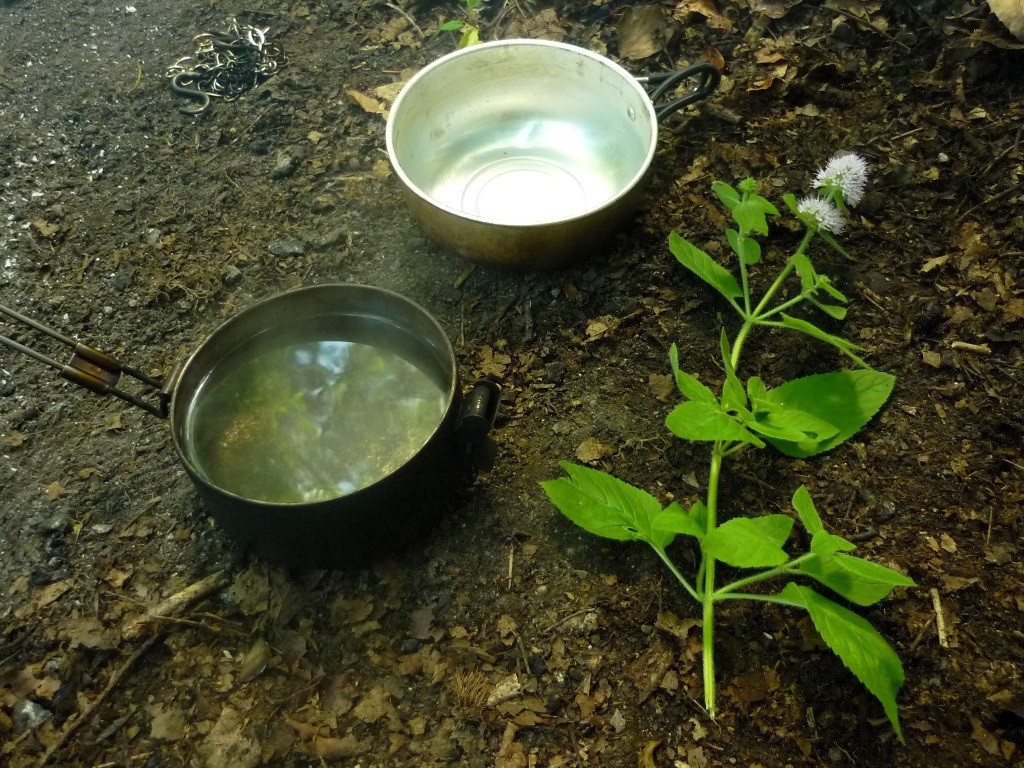
Anybody for mint tea? (Photo: Sean Fagan)
.
STEP 2: Pick a few leaves off the plant. You don’t need many leaves – as wild plants often have strong flavours.
Make sure to remove the leaf stalks (they tend to float).
.
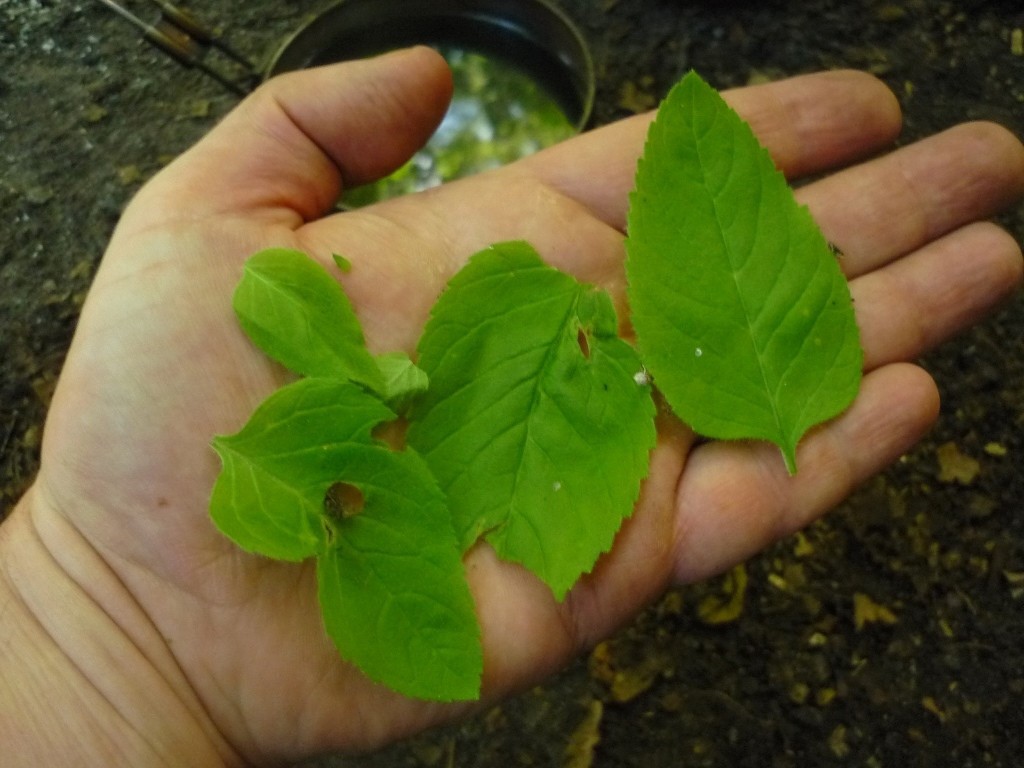
When it comes to wild tea - a few leaves is often all that is necessary. I find 3 to 4 leaves of water mint, for example, just perfect for tea. Experiment with this aspect of tea-making for yourself (Photo: Sean Fagan).
.
STEP 3: Shred or cut up the leaves up into fairly small pieces. You can use a scissors or knife, or just your hands.
.
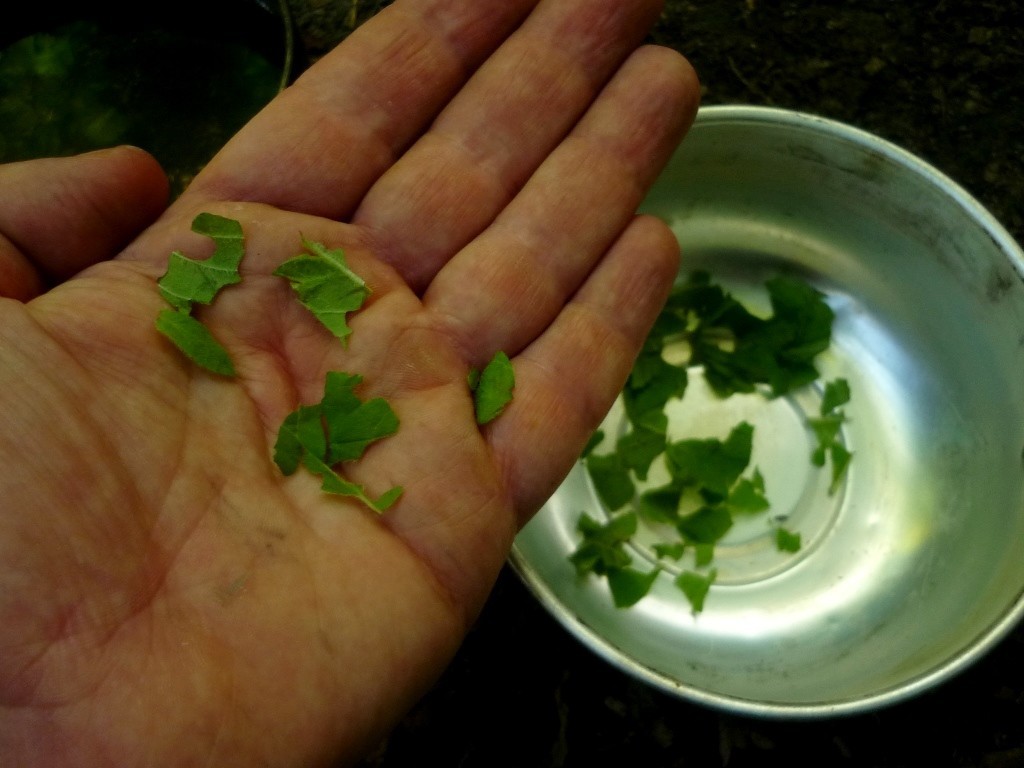
Shred or cut up the leaves into small pieces and place at bottom of cup. How small? Small enough so the leaves will sink shortly after being immersed in hot water (Photo: Sean Fagan).
.
STEP 4: This is important - place the shredded/cut leaves on the bottom of the cup - then add very hot water. Give the leaves a vigorous stirring. After a short while - the leaves will sink to the bottom of the cup, making it possible to drink the tea.
Do not add the leaves to a cup of hot water as the leaves will, annoyingly, remain floating on the water’s surface.
.
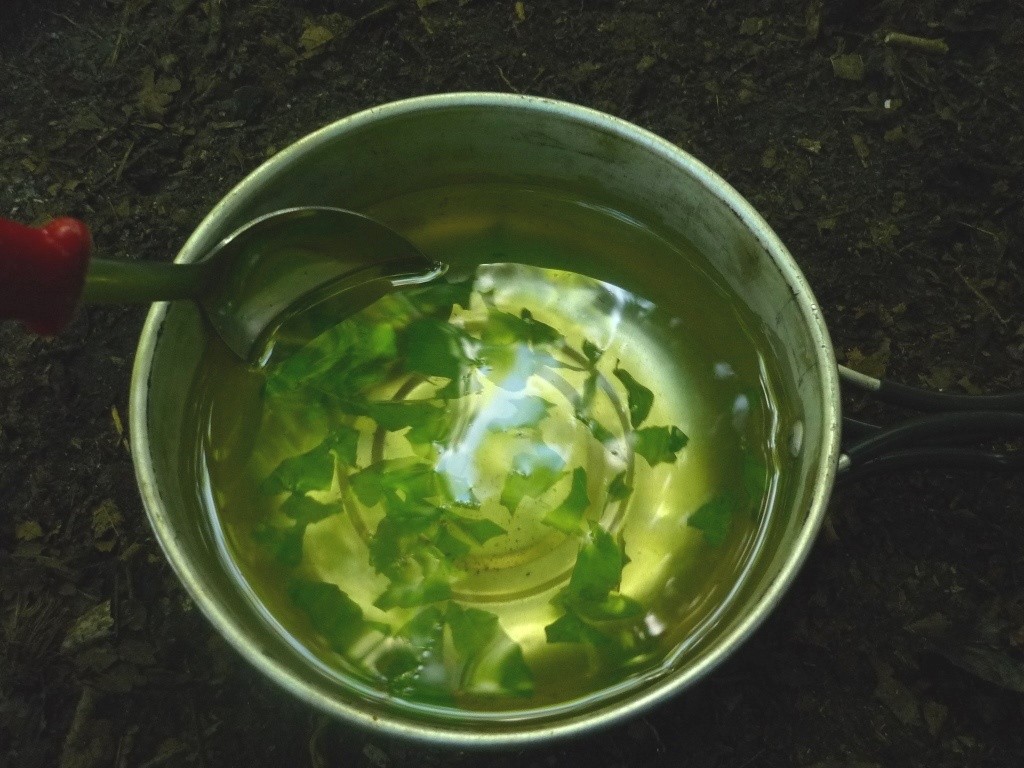
Give the leaves a good stirring to hasten the sinking and infusion process (Photo: Sean Fagan).
.
Enjoy. To retain more nutrients of your wild tea you can place a lid over your cup and allow to steep for longer (which will also impart a stronger flavour).
Congratulations, you’ve successfully made an infusion from a wild plant.
.

Kick back and enjoy your tea. Besides the nutritional value and nice flavours of many wild teas - hot teas are also good for staving off the chilling effects of damp or cold weather. Note in above photo, the colour change of water - which went from clear to a green tinge. This colour change is caused from steeping leaves in hot water. It's a process I find strangely fascinating. (Photo: Sean Fagan).
*Don't forget to experiment a little. You might want to use less or more leaves according to the plant species (some plants or local variants of a plant species can taste stronger than others). Consider also combining the leaves of different plants species too.
You can use flowers for tea-making but it’s generally something I don’t recommend as it can be far more detrimental to the survival of a wild plant in a given area. Plants are far more tolerant of a few leaves gone missing that their flowers.
But use common sense in this regard. If you fancy a tea from the flowers of wild garlic and you some across a great woodland swathe of wild garlic - then by all means pick some flowers for tea (they are yummy in my opinion).
.
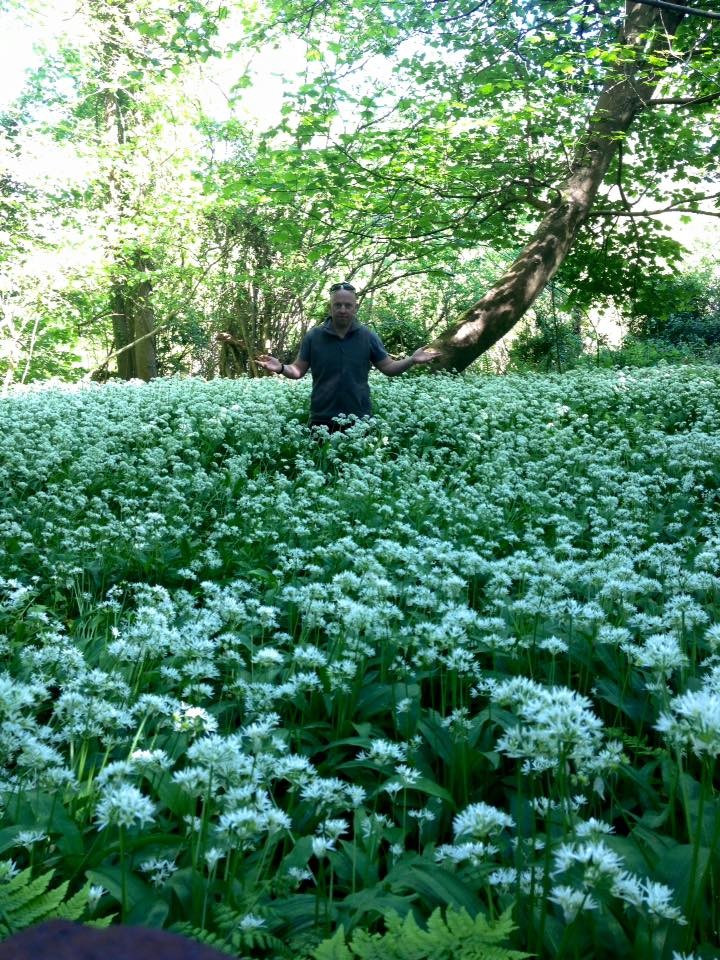
Happily drowning in a sea of Wild Garlic (Allium ursinum). Plenty of flowers here for making a very healthy tea (wild garlic is often attributed with many medicinal and health benefits), (Photo: Sean Fagan).
.
.
A Word of Caution
.
Make sure you’re plant identification skills are razor sharp. When unsure about the identify of a wild plant, follow a simple rule: IF IN DOUBT, LEAVE IT OUT!
When starting out, it's best to stick to a few plants that you can positively identify (nettle and dandelion are two of my favourites – easy to identify with a long growing season, nutritious and widespread…prefect candidates for an outdoor tea).
Finally, on a more obscure note – the over-consumption of some plants can lead to health complications – and consuming some edible plants during some seasons can also be detrimental.
My best advice is to research about any potential pitfalls that may arise from consuming plants.
Besides comprehensive research about the good and bad of consuming wild plants I also recommend that you concentrate your tea-making to plants that can be consumed long-term with little or no health risks.
Dandelion is a good example.
I’ve included links below to the process of tea-making - which includes, for example, the distinction between an infusion and decoction.
.
.
“My love affair with nature is so deep that I am not satisfied with being a mere onlooker, or nature tourist. I crave a more real and meaningful relationship. The spicy teas and tasty delicacies I prepare from wild ingredients are the bread and wine in which I have communion and fellowship with nature, and with the Author of that nature.” ~ Euell Gibbons
.
.
Related Articles on this Website:
- Plant Lore: The Stinging Nettle
- Toxic versus Edible Wild Plants
- The Bushcraft Value of Urban Wild Plants
.
*Check us out on Instagram, Twitter & Facebook for more outdoor-related topics..
Related Material:
- What is a tea infusion?
- Opposite-leaved Golden-saxifrage
- Water Mint
- Stinging Nettle
- Herbalism of Wild Garlic "Many marvellous effects and healing powers have been ascribed to Garlic"
- Herbalism of Dandelion “…the plant (dandelion) is cultivated largely in India as a remedy for liver complaints.”
- Euell Gibbons "Often mistaken for a survivalist, Gibbons was simply an advocate of nutritious but neglected plants"

Recent Comments